GCC strives to reach real estate potential
27 June 2024

The real estate sector across the six states that make up the GCC has not yet achieved its full potential when it comes to attracting foreign investment.
This is best illustrated by the region’s largest economy, Saudi Arabia. The kingdom’s Vision 2030 economic diversification strategy includes ambitious targets to increase homeownership among citizens and attract international investors with its recently introduced Premium Residency Visa. The new visa is designed to open up the market to global investors, and while some gains are starting to be made, the market is still at the start of this journey.
Throughout the GCC, real estate markets have demonstrated a degree of resilience and stability following the Covid-19 pandemic, but challenges remain.
Rising borrowing costs and slow-paced reforms have affected the residential sector in the region, although the impact has not been universal. In Kuwait and Saudi Arabia, real estate sales have declined significantly, whereas in Dubai, sales continue apace.
For commercial real estate, the demand for high-quality, sustainable office spaces is a common trend. Businesses are increasingly favouring high-quality Grade A properties, leading to higher rental rates compared to mid- and low-end offices.
The retail sector has benefited from increased consumer activity, particularly during festive seasons. Malls and mixed-use developments have maintained stable rental rates, although some areas, like strip retail rentals, have seen slight declines. This reflects a broader trend of consumer preferences shifting towards more integrated and experiential shopping environments with a keen focus on entertainment.
Meanwhile, the industrial sector has shown robust demand, driven by manufacturing and logistics. High occupancy rates for large and medium-sized warehouses underline the sector’s resilience.
Bahrain
Bahrain’s property market is performing steadily, driven by strategic homebuyers focusing on mid-range properties, as well as a growing demand for luxury waterfront homes.
The market’s attractiveness has been enhanced by masterplanned developments such as Bahrain Bay and Diyar Al-Muharraq, which have achieved a critical mass that means they are now perceived as thriving communities rather than ongoing construction projects.
While project completions are important for confidence, in its Q1 2024 market report, property consultant Savills warns that key project completions such as Onyx Residences, Al-Nasseem Phase 2 Villas and Wadi Al-Riffa could lead to a short-term dip in capital values due to oversupply.
Any possible fall could reverse recent gains. According to Savills, high-end apartment units registered modest 0.3% quarterly growth, averaging BD832 ($2,207.6) a square metre (sq m), while high-end villas have experienced a 4.5% year-on-year decline, averaging BD583/sq m.
Savills reports that the office sector has remained stable, with businesses favouring high-quality Grade A properties, leading to higher rental rates compared to mid- and low-end offices. Demand for Leed-certified spaces and co-working environments is increasing, reflecting environmental, social and governance (ESG) commitments. Grade A properties face mild value corrections due to new developments.
Retail benefited from festive mall footfalls, keeping rental rates stable for malls and mixed-use developments, while strip retail rentals dropped slightly.
Kuwait
The Kuwait real estate sector continued its dismal performance in 2023 due to rising borrowing costs and the slow pace of ongoing reforms. The volume of transactions saw a significant downturn, according to a report by Marmore, a fully owned research subsidiary of Kuwait Financial Centre, Markaz.
Real estate sales dropped to KD2.1bn ($6.7bn) in the first nine months of 2023, reflecting a 26% year-on-year decline from KD2.8bn ($9.1bn). This downturn has affected all segments of the market.
In the residential sector, sales fell by 26% in Q3 2023, totalling KD1.1bn ($3.6bn), down from KD1.4bn ($4.7bn) in the same period of the previous year. The number of transactions also declined by 34% year-on-year. High house prices and borrowing costs have kept demand muted.
The residential rental segment also decreased by 20% year-on-year, reaching KD666m ($2.2bn) in Q3 2023, down from KD831m ($2.7bn) in Q3 2022.
The commercial sector experienced a 37% year-on-year drop in sales, to KD321m ($1bn) in 2023, compared to KD511m ($1.6bn) in 2022. The number of transactions in this sector declined by 35% year-on-year.
In July last year, Kuwait’s National Assembly approved the Housing Development Law and amendments to the Housing and Real Estate Affairs Law that enables private sector involvement – including foreign investment – in developing cities and residential areas, and aims to prevent land monopolies. These measures could positively influence the country’s real estate market this year.
Oman
After a couple of tough years during and immediately following the Covid-19 pandemic, Oman is again capitalising on its real estate potential, with new projects attracting interest from residents and investors.
The sultanate’s real estate market in 2024 is buoyed by a combination of increasing expatriate populations, attractive pricing and favourable government policies.
A recent report by property consultancy Cavendish Maxwell highlights the contribution of the government’s strategic reforms and investments in infrastructure as critical drivers for the growth of the real estate sector in the country. These have included the easing of foreign ownership restrictions, the introduction of new real estate laws and enhanced regulatory frameworks that have created a more transparent and attractive market for investors.
Longer term, Muscat has set targets for the economy that will support the real estate sector. Under Oman’s Vision 2040 plan, the government aims to attract 11 million visitors annually by 2040, which will boost the tourism industry. Investments in economic zones, renewable energy, manufacturing and tourism projects will contribute to the growth of the construction industry, including the real estate sector.
Oman is developing new projects in response to the long-term opportunities that this growth will create. These include the Sultan Haitham City project to the west of Muscat and a masterplanned mountain development on Jebel Akhdar, launched earlier this year.
Qatar
Following a period of fluctuation around the 2022 Fifa World Cup, Qatar’s real estate market is showing signs of stability, according to Cushman & Wakefield. The number of real estate sales transactions surged by 17.3% in January and February this year compared to the same period in 2023, with an overall value increase of 4.1%.
The declining trend in residential sales transactions seen in 2023, when a drop of 16.2% was recorded compared to 2022, has been reversed in the first two months of this year. Residential sales transactions have increased by 30% compared to the same period last year, reflecting a significant 46% rise in transaction value.
In the rental segment, the early months of 2024 have highlighted a growing disparity between newly constructed residential projects and those built over a decade ago. Tenants are increasingly drawn to modern, well-managed serviced appartments.
Office leasing activity declined in the first quarter of 2024, following a good run at the end of 2023. Over the past six months, more than 70,000 sq m of Grade A office space has been reserved, leading to a decrease in availability in areas including Lusail and Msheireb.
In the first quarter of 2024, hotel room supply in Qatar reached 38,000, which marks a 45% increase in supply over the past five years.
Despite initial concerns of oversupply, Qatar’s hotel industry has experienced a significant boost due to a rise in tourist arrivals since January. Hotel occupancy rates also soared to 84% in January and 85% in February, reaching their highest levels since 2015.
Saudi Arabia
Saudi Arabia’s real estate sector is moving into a new phase as it aims to build on its recent successes and targets foreign investment more proactively.
Real estate forms a key part of the kingdom’s Vision 2030, which aims to increase homeownership by Saudi nationals to 70% by 2030, from 63.7% in 2023.
The residential real estate market in Saudi Arabia is experiencing robust demand, especially in the major cities of Riyadh, Jeddah and Dammam. In Q1 2024, Riyadh recorded a 77% year-on-year increase in sales transactions, while Jeddah saw a 92.9% rise. This surge in activity underscores the strong appetite for residential properties in these urban centres.
Despite this growth, the market faces challenges such as affordability and a shortage of appropriately priced homes.
Historically, foreign ownership restrictions have limited international investment in Saudi real estate. However, the new visa scheme signifies a pivotal shift, encouraging a diverse pool of global talents and investors to contribute to the local economy. This move is expected to drive up property values in premium segments and spur the development of luxury real estate projects.
“The real estate market in Saudi Arabia has long anticipated a change in the foreign ownership rules. A significant milestone was reached at the start of the year when a raft of new Premium Residency Visa options were unveiled, including a real estate ownership-linked visa, which is likely to pave the way for international buyers and investors,” says real estate consultancy Knight Frank in its recent Destination Saudi Report.
This move is expected to create supplemental demand from foreign investors that have been waiting for changes in the kingdom’s ownership laws.
Saudi Arabia’s new Premium Residency Visas include a real estate ownership-linked option that is designed to attract foreign investment by allowing non-Saudis to own property worth at least SR4m ($1.1m).
This policy shift marks a strategic opening up of the market to international investors and affluent expatriates and could potentially boost high-value transactions and increase the demand for luxury residential properties in the kingdom.
One of the early focus areas for new investment inflows could be the holy cities of Mecca and Medina.
The demand for real estate in Saudi Arabia is also being driven by high-net-worth individuals (HNWI), particularly those from Muslim-majority countries. Surveys indicate that 82% of international HNWI buyers are keen to own real estate in the kingdom, with significant interest in the two holy cities.
These buyers view Saudi Arabia as a good investment opportunity, with cultural and religious reasons also playing a crucial role in their decision-making, Knight Frank says in its Destination Saudi report.
UAE
The UAE’s real estate market started 2024 on a robust note, showing increased activity levels across all sectors during the first quarter, according to the latest report by property consultant CBRE.
The report shows that the total transaction volumes in Dubai’s residential market reached 35,310 in Q1 2024. This is the highest total ever recorded in the first quarter of the year, marking an increase of 20.5% from the previous year.
Off-plan transactions in Dubai also increased by 23.9%, whereas secondary market transactions rose by 15.2% during the same period.
The CBRE report also outlined that in the first quarter of 2024, Dubai’s residential market witnessed an increase in average prices of 20.7% by March 2024 compared to the previous year.
In Abu Dhabi, average apartment prices rose by 4.3% and villa prices saw an increase of 2.3% during the same period.
In the commercial sector, the total number of rental registrations in the office sector increased to 46,850, a hike of 35.8% compared to the previous year, according to data from Dubai Land Department.
In Abu Dhabi, an increased activity level in the commercial space sector has taken the occupancy rate to 94% in the first quarter of 2024, up from the 92.5% registered in the same period last year. The increased occupancy levels have led to a growth in rentals, where Prime, Grade A and Grade B rents posted average growth rates of 6.6%, 3.4% and 9.7%, respectively.
The hospitality sector also noted improvement. The number of international visitors to Dubai totalled 5.2 million in the period from January to March 2024, up by 10.2% from a year earlier. The total number of hotel guests in Abu Dhabi stood at 1.3 million, a growth of 22% compared to Q1 2023.
In the retail sector, leasing activity lagged in Abu Dhabi as 7,779 rental contracts were registered in the first quarter of 2024, marking a decline of 8.1% compared to Q1 2023. Dubai witnessed a marginal increase of 0.2% in retail registrations compared to same period last year, recording a total of 23,139.
Finally, the UAE’s industrial and logistics sector also recorded positive leasing activity, with the total number of rental registrations in Abu Dhabi and Dubai increasing by 4.7% and 3.2%, respectively, compared to the same period last year.
Additional reporting by Yasir Iqbal
Exclusive from Meed
-
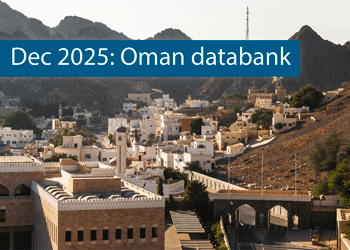 Oman’s growth forecast points upwards
Oman’s growth forecast points upwards24 December 2025
-
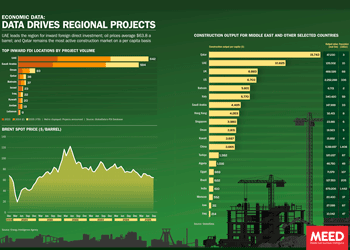 December 2025: Data drives regional projects
December 2025: Data drives regional projects23 December 2025
-
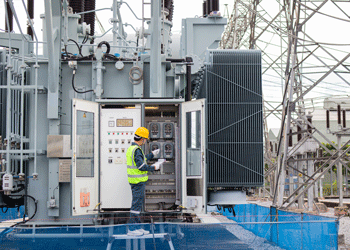 Local firm bids lowest for Kuwait substation deal
Local firm bids lowest for Kuwait substation deal22 December 2025
-
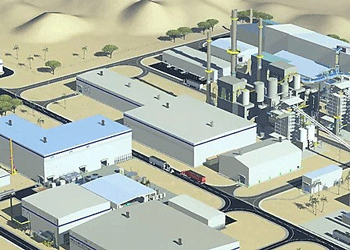 Saudi-Dutch JV awards ‘supercentre’ metals reclamation project
Saudi-Dutch JV awards ‘supercentre’ metals reclamation project22 December 2025
-
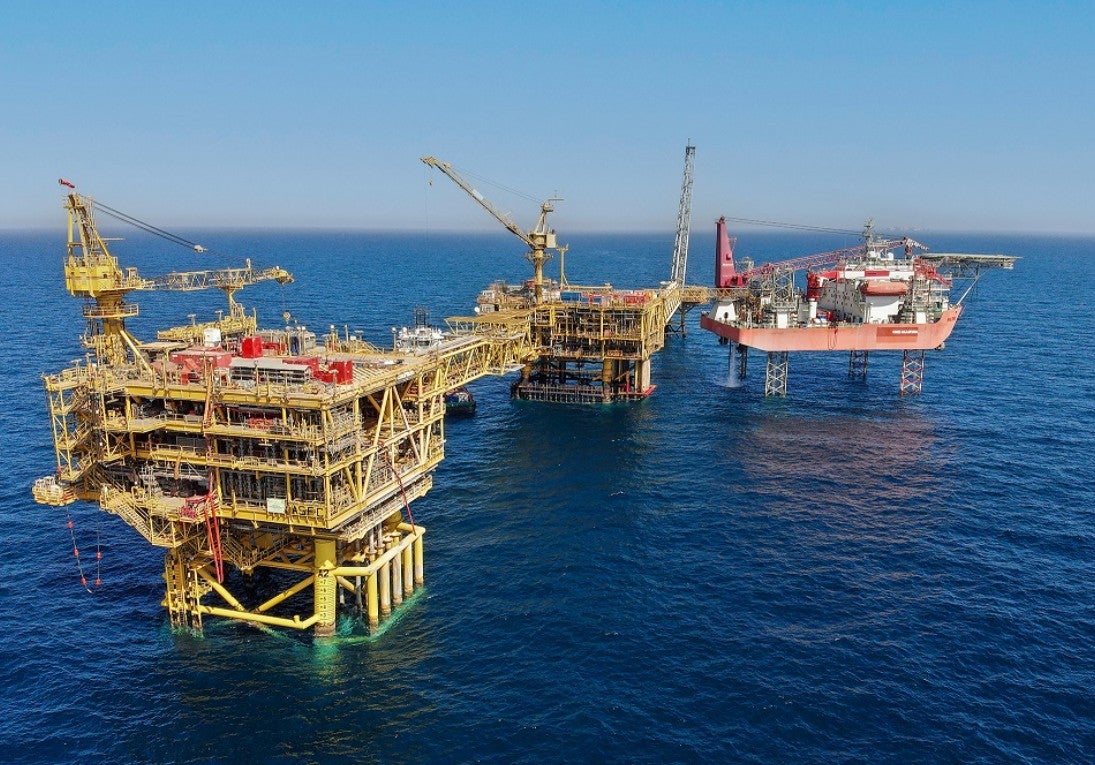 QatarEnergy LNG awards $4bn gas project package
QatarEnergy LNG awards $4bn gas project package22 December 2025
All of this is only 1% of what MEED.com has to offer
Subscribe now and unlock all the 153,671 articles on MEED.com
- All the latest news, data, and market intelligence across MENA at your fingerprints
- First-hand updates and inside information on projects, clients and competitors that matter to you
- 20 years' archive of information, data, and news for you to access at your convenience
- Strategize to succeed and minimise risks with timely analysis of current and future market trends

Related Articles
-
 Oman’s growth forecast points upwards
Oman’s growth forecast points upwards24 December 2025

MEED’s January 2026 report on Oman includes:
> COMMENT: Oman steadies growth with strategic restraint
> GVT & ECONOMY: Oman pursues diversification amid regional concerns
> BANKING: Oman banks feel impact of stronger economy
> OIL & GAS: LNG goals galvanise Oman’s oil and gas sector
> POWER & WATER: Oman prepares for a wave of IPP awards
> CONSTRUCTION: Momentum builds in construction sectorTo see previous issues of MEED Business Review, please click herehttps://image.digitalinsightresearch.in/uploads/NewsArticle/15306449/main.gif -
 December 2025: Data drives regional projects
December 2025: Data drives regional projects23 December 2025
Click here to download the PDF
Includes: Top inward FDI locations by project volume | Brent spot price | Construction output
MEED’s January 2026 report on Oman includes:
> COMMENT: Oman steadies growth with strategic restraint
> ECONOMY: Oman pursues diversification amid regional concerns
> BANKING: Oman banks feel impact of stronger economy
> OIL & GAS: LNG goals galvanise Oman’s oil and gas sector
> POWER & WATER: Oman prepares for a wave of IPP awards
> CONSTRUCTION: Momentum builds in construction sectorTo see previous issues of MEED Business Review, please click herehttps://image.digitalinsightresearch.in/uploads/NewsArticle/15306140/main.gif -
 Local firm bids lowest for Kuwait substation deal
Local firm bids lowest for Kuwait substation deal22 December 2025
The local Al-Ahleia Switchgear Company has submitted the lowest price of KD33.9m ($110.3m) for a contract to build a 400/132/11 kV substation at the South Surra township for Kuwait’s Public Authority for Housing Welfare (PAHW).
The bid was marginally lower than the two other offers of KD35.1m and KD35.5m submitted respectively by Saudi Arabia’s National Contracting Company (NCC) and India’s Larsen & Toubro.
PAHW is expected to take about three months to evaluate the prices before selecting the successful contractor.
The project is one of several transmission and distribution projects either out to bid or recently awarded by Kuwait’s main affordable housing client.
This year alone, it has awarded two contracts worth more than $100m for cable works at its 1Z, 2Z, 3Z and 4Z 400kV substations at Al-Istiqlal City, and two deals totalling just under $280m for the construction of seven 132/11kV substations in the same township.
Most recently, it has tendered two contracts to build seven 132/11kV main substations at its affordable housing project, west of Kuwait City. The bid deadline for the two deals covering the MS-01 through to MS-08 substations is 8 January.
https://image.digitalinsightresearch.in/uploads/NewsArticle/15305745/main.gif -
 Saudi-Dutch JV awards ‘supercentre’ metals reclamation project
Saudi-Dutch JV awards ‘supercentre’ metals reclamation project22 December 2025
The local Advanced Circular Materials Company (ACMC), a joint venture of the Netherlands-based Shell & AMG Recycling BV (SARBV) and local firm United Company for Industry (UCI), has awarded the engineering, procurement and construction (EPC) contract for the first phase of its $500m-plus metals reclamation complex in Jubail.
The contract, estimated to be worth in excess of $200m, was won by China TianChen Engineering Corporation (TCC), a subsidiary of China National Chemical Engineering Company (CNCEC), following the issue of the tender in July 2024.
Under the terms of the deal, TCC will process gasification ash generated at Saudi Aramco’s Jizan refining complex on the Red Sea coast to produce battery-grade vanadium oxide and vanadium electrolyte for vanadium redox flow batteries. AMG will provide the licensed technology required for the production process.
The works are the first of four planned phases at the catalyst and gasification ash recycling ‘Supercentre’, which is located at the PlasChem Park in Jubail Industrial City 2 alongside the Sadara integrated refining and petrochemical complex.
Phase 2 will expand the facility to process spent catalysts from heavy oil upgrading facilities to produce ferrovanadium for the steel industry and/or additional battery-grade vanadium oxide.
Phase 3 involves installing a manufacturing facility for residue-upgrading catalysts.
In the fourth phase, a vanadium electrolyte production plant will be developed.
The developers expect a total reduction of 3.6 million metric tonnes of carbon dioxide emissions a year when the four phases of the project are commissioned.
SARBV first announced its intention to build a metal reclamation and catalyst manufacturing facility in Saudi Arabia in November 2019. The kingdom’s Ministry of Investment, then known as the Saudi Arabian General Investment Authority (Sagia), supported the project.
In July 2022, SARBV and UCI signed the agreement to formalise their joint venture and build the proposed facility.
The project has received support from Saudi Aramco’s Namaat industrial investment programme. Aramco, at the time, also signed an agreement with the joint venture to offtake vanadium-bearing gasification ash from its Jizan refining complex.
Photo credit: SARBV
https://image.digitalinsightresearch.in/uploads/NewsArticle/15305326/main.gif -
 QatarEnergy LNG awards $4bn gas project package
QatarEnergy LNG awards $4bn gas project package22 December 2025
QatarEnergy LNG, a subsidiary of state-owned QatarEnergy, has awarded the main engineering, procurement, construction and installation (EPCI) contract for a major package for the second phase of its North Field Production Sustainability (NFPS) project.A consortium comprising the Italian contractor Saipem and state-owned China Offshore Oil Engineering Company (COOEC) has secured the EPCI contract for the COMP5 package. The contract value is $4bn, with Saipem declaring its share to be worth $3.1bn.
Milan-headquartered Saipem said the contract will run for about five years. The scope of work comprises engineering, procurement, fabrication and installation of two compression complexes, each including a compression platform, a living quarters platform, a flare platform supporting the gas combustion system, and the related interconnecting bridges. Each complex will have a total weight of about 68,000 tonnes.
Offshore installation operations will be carried out by Saipem’s De He construction vessel in 2029 and 2030.
MEED previously reported that the following contractors submitted bids for the NFPS phase two COMP5 package:
- Larsen & Toubro Energy Hydrocarbon (India)
- McDermott (US)
- Saipem/China Offshore Oil Engineering Company (Italy/China)
QatarEnergy LNG, formerly Qatargas, is said to have issued the tender for the NFPS phase two COMP5 package in the first quarter of the year.
Contractors submitted technical bids for the COMP5 package in late June, while commercial bids were submitted by 8 October, as per sources.
Based upon initial evaluation of bids by QatarEnergy LNG, L&TEH has emerged as the lowest bidder for the COMP5 package, followed by McDermott, with the consortium of Saipem and COOEC in third place, MEED reported in late October.
In the weeks following that, the project operator is said to have engaged all bidders for a final round of negotiations, during which the consortium of Saipem and COOEC is believed to have “clinched the deal”, according to sources.
The detailed scope of work on the COMP5 package covers the EPCI work on the following:
- Two gas compression platforms, each weighing 30,000-35,000 tonnes, plus jacket
- Two living quarters platforms, plus jacket
- Two gas flare platforms, plus jacket
- Brownfield modification work at two complexes
NFPS scheme
QatarEnergy’s North Field liquefied natural gas (LNG) expansion programme requires the state enterprise to pump large volumes of gas from the North Field offshore reserve to feed the three phases of the estimated $40bn-plus programme.
QatarEnergy has already invested billions of dollars in engineering, procurement and construction works on the two phases of the NFPS project, which aims to maintain steady gas feedstock for the North Field LNG expansion phases.
The second NFPS phase will mainly involve building gas compression facilities to sustain and gradually increase gas production from Qatar’s offshore North Field gas reserve over the long term.
Saipem has been the most successful contractor on the second NFPS phase, securing work worth a total of $8.5bn.
QatarEnergy LNG awarded Saipem a $4.5bn order in October 2022 to build and install gas compression facilities. The main scope of work on the package, which is known as EPCI 2, covers two large gas compression complexes that will comprise decks, jackets, topsides, interconnecting bridges, flare platforms, living quarters and interface modules.
The gas compression complexes – CP65 and CP75 – will weigh 62,000 tonnes and 63,000 tonnes, respectively, and will be the largest fixed steel jacket compression platforms ever built.
Following that, Saipem won combined packages COMP3A and COMP3B of the NFPS project’s second phase in September last year.
The scope of work on the combined packages encompasses the EPCI of a total of six platforms, approximately 100 kilometres (km) of corrosion resistance alloy rigid subsea pipelines of 28-inches and 24-inches diameter, 100km of subsea composite cables, 150km of fibre optic cables and several other subsea units.
Separately, QatarEnergy LNG awarded McDermott the contract for the NFPS second phase package known as EPCI 1, or COMP1, in July 2023. The scope of work on the estimated $1bn-plus contract is to install a subsea gas pipeline network at the North Field gas development.
In March this year, India’s Larsen & Toubro Energy Hydrocarbon (LTEH) won the main contract for the combined 4A and 4B package, which is the fourth package of the second phase of the NFPS project and is estimated to be valued at $4bn-$5bn.
The main scope of work on the package is the EPCI of two large gas compression systems that will be known as CP8S and CP4N, each weighing 25,000-35,000 tonnes. The contract scope also includes compression platforms, flare gas platforms and other associated structures.
LTHE sub-contracted detailed engineering and design works on the combined 4A and 4B package to French contractor Technip Energies.
NFPS first phase
Saipem is also executing the EPCI works on the entire first phase of the NFPS project, which consists of two main packages.
Through the first phase of the NFPS scheme, QatarEnergy LNG aims to increase the early gas field production capacity of the North Field offshore development to 110 million tonnes a year.
QatarEnergy LNG awarded Saipem the contract for the EPCI package in February 2021. The package is the larger of the two NFPS phase one packages and has a value of $1.7bn.
Saipem’s scope of work on the EPCI package encompasses building several offshore facilities for extracting and transporting natural gas, including platforms, supporting and connecting structures, subsea cables and anti-corrosion internally clad pipelines.
The scope of work also includes decommissioning a pipeline and other significant modifications to existing offshore facilities.
In addition, in April 2021, QatarEnergy LNG awarded Saipem two options for additional work within the EPCI package, worth about $350m.
QatarEnergy LNG awarded Saipem the second package of the NFPS phase one project, estimated to be worth $1bn, in March 2021.
Saipem’s scope of work on the package, which is known as EPCL, mainly covers installing three offshore export trunklines running almost 300km from their respective offshore platforms to the QatarEnergy LNG north and south plants located in Ras Laffan Industrial City.
Saipem performed the front-end engineering and design work on the main production package of the first phase of the NFPS as part of a $20m contract that it was awarded in January 2019. This provided a competitive advantage to the Italian contractor in its bid to win the package.
https://image.digitalinsightresearch.in/uploads/NewsArticle/15305330/main2239.jpg

